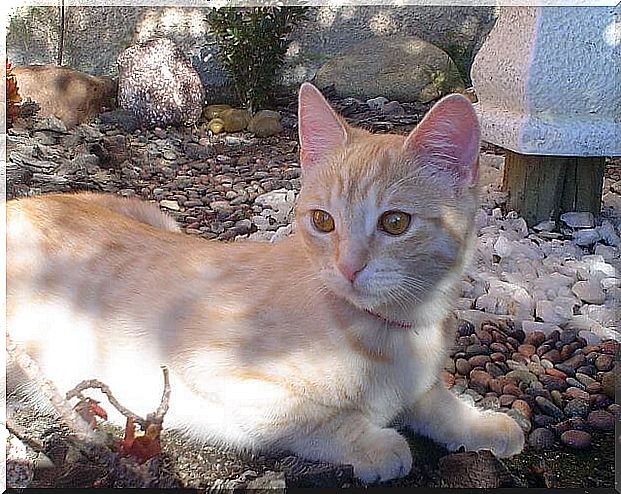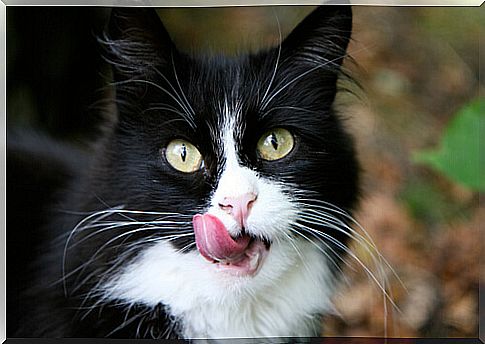Viral Diseases Of Cats

Viral diseases of cats can affect domestic and stray animals. Of all races, and also mongrels.
The felines stand out for the nobility of their bearing and the independence of their character. But it is a mistake to believe that their autonomy means that they need less care or less dedication. Like all living things, cats can also get sick and deserve attention for their health.
What are the most common viral diseases of cats?
-
Feline leukemia
It is a viral disease that affects young cats more frequently. Mainly those who live in groups of felines. Due to its ease of transmission and high lethality, it is considered one of the most severe viral diseases of cats.
Feline Leukemia Virus (FeLV) is a type of oncovirus transmitted from direct contact with bodily fluids. The replication of the pathogen in the body leads to a carcinogenic process.
The main form of contagion is contact with sick cats. Feline leukemia can be transmitted through the urine, feces, sneezes, and saliva of infected animals.
Once in the body, the virus can be encapsulated for about 3 years. For this reason, the incubation period for feline leukemia can be very varied, from a few weeks to more than 30 months.

The most common symptoms of feline leukemia are:
- Appetite request.
- Tiredness or lethargy
- Enlarged nodes.
- Malnutrition and / or dehydration.
- Severe anemia
- Small ulcers in the mouth and mucous membranes.
The best way to prevent your pet is to respect the vaccination schedule and avoid contact with sick cats.
-
Viral rhinotracheitis
This disease is facilitated by the feline herpes virus. About 50% of viral diseases in cats that affect the respiratory system are caused by this virus.
The most common mode of transmission is contact with saliva, runny nose, and other fluids from infected animals. Young cats up to 1 year old are especially vulnerable. Therefore, it is essential to vaccinate them during the first weeks of life.
The main symptoms of viral rhinotracheitis are:
- Fever.
- Loss of appetite
- Nasal mucus
- Sneezing
- Conjunctivitis.
- Tearing
- Ulcerative wounds on the cornea.
-
Feline panleukopenia
Panleukopenia is also known as feline distemper or infectious gastroenteritis. Its causative agent is a parvovirus that is also related to canine parvovirus. It is a disease with a very high mortality rate, being able to degenerate the health of an animal in a few days.
The main form of contagion is through direct contact with the body fluids of infected animals. It mainly and most seriously affects young cats with up to 1 year of life. Early vaccination is the best way to prevent the advance of this disease and protect your pet.
The main symptoms of feline panleukopenia are:
- Fever (over 40ºC).
- Hypothermia.
- Vomiting
- Diarrhea.
- Malnutrition and dehydration.
- Weakness and excessive sleepiness.
- Anorexy.
- Severe decrease in the number of leukocytes in the blood stream.
Early diagnosis is essential to ensure the effectiveness of treatment. Therefore, it is essential to go immediately to the vet when observing any of these symptoms.
-
Feline calicivirus
This disease also known as Feline Alicivirosis is caused by a picornavirus.

About 40% of respiratory tract infections in cats are caused by different types of picornavirus. Calicivirus is one of the diseases with the highest fatality rate among felines. The specific symptoms of feline Calcivirus include:
- Fever.
- Excessive salivation
- Sneezing
- Blisters and ulcerative wounds on the tongue and in the mouth.
- Loss of appetite
- Lethargy
- Malnutrition.
The main form of contagion is contact with the feces, saliva and nasal secretions of infected cats. And once again the best form of prevention is vaccination.
-
Feline immunodeficiency
Popularly known as feline AIDS, this disease is caused by the lentivirus.
The most frequent form of contagion is contact with the blood of infected animals. Most cats were infected during fights or in the act of reproduction. For this reason, it most commonly affects cats of reproductive age that were not sterilized.
The manifestation of this disease causes a severe depression of the immune system. That is the gateway for secondary diseases that can lead the animal to death.
Therefore, the form of prevention consists of sterilizing the young animal and avoiding contact with infected cats.
Many of the viral diseases of cats develop silently. Being attentive for changes in behavior and complying with preventive measures are essential to take care of your pet.
Main image source: Julimux









